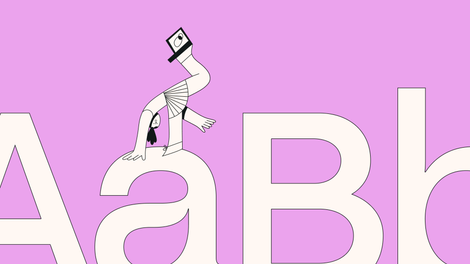
Personal branding, as the term suggests, is all about yourself and your personality transformed into a brand.
When you build your brand, it's crucial to have a personal logo that you can use for different aspects of your brand, from business cards to your social media channels.
Jumpstart your ideas with Linearity Curve
Take your designs to the next level.
What is a personal logo?
A personal logo is your own brand. The personal logo that you create will be an extension of you as an artist, graphic designer, writer, and so on. You are the one that defines your own brand, and the personal logo is what defines you as a brand.
Once you start interacting with potential customers and audiences, your personal logo will reinforce your personal brand and how you want to be perceived.
Just like any logo, a personal logo is made up of different design elements that you want to represent the brand and its values.
The difference between a company logo and a personal logo is that the personal logo should also contain elements of your character and be a great representative of your work.
A personal logo should be memorable and easy to recognize. It can also contain the name of your website, your product, your business name, or your personal name.
It would be ideal if you've already decided on a name or symbol that you would like to include in your logo. If not, don’t worry! As we’ve said, we will go through each part of the logo creation process step by step, so it is easier to follow and take notes.
Before we start, we would like to note that there are three main ways how you can create a personal logo.
Hiring a professional designer
This option might be the best if you do not have a background in design and are not confident in your design skills, and would like to have someone who is professional and specializes in logo creation.
Alternatively, you might need to look for design services to help you with a professional logo design. Many affordable logo design services can help you create a personal logo design.
Nevertheless, you would still need to know a few things first and get some ideas regarding logo creation before you send your design request.
The following guide will help you get a clear view of what you need and head you in the right direction. Once you know more about the process and what's required, you'll have fewer questions and fewer requests to make to anyone you hire for your personal logo.
Using an AI-powered logo maker
Generating a personal logo with an AI-powered logo maker has become trendy. We get it. Who doesn’t want to generate a few logos in a matter of minutes and feel like a graphic designer for a moment?
AI logo creators are pretty fun. In most cases, the tool will ask you to enter your brand's name, the slogan (optional) and pick any theme, colors, and symbols that best represent your brand.
After a few moments, you will be given several logo options which you can customize and use. Some of these tools offer free services, while others request a fee before letting you customize them and download them.
So far, so good, right? Well, not so fast.
While AI-powered logo makers are cool and fun to play around with, they are a tool, after all, and quite limited in what they can offer.
No matter how customizable they might be, nothing comes close to designing something completely new yourself.
Plus, since most of these basic design software tools are pretty accessible by everyone, you will generate a similar logo to someone else’s logo, especially if they have a similar brand name and have chosen a similar theme and symbols.
Craft Memorable Logos with Ease
Discover the power of Linearity's logo maker. Unleash your creativity and build striking, professional logos in just a few clicks.
We do, however, recommend using such tools for a few purposes:
1. Getting some ideas
Using logo generators can be just the tool you need to get the ball rolling. The logo versions that will be generated will give you a few ideas.
Even if you do not wish to use any of them or customize them, you will be able to see how certain colors look and how they can be combined with letters and symbols. You will see what kind of theme works for your brand.
2. Getting a logo for prototype purposes
Let’s say that you need to have a logo and branding for an application that you are filling out when applying for funding or for going to a conference.
Or maybe you need to submit a prototype of your product or app and need to have some sort of a logo to give the brand a more “official” look.

In that case, you can use a logo generator to help you out if you need a temporary logo and need it fast. As long as you know that it is temporary and you will change it at a later stage, it won’t hurt to have a provisional logo in place so that you can go ahead with all the applications and fundraising.
3. Using it as a base
After generating some logo versions, you can select the ones that go well with your vision for the brand. Then, go a step further and use these versions for your mood board. You can transfer these ideas to Vectornator and create a new logo based on some of the generated ideas.
This way, you get to create something unique but still be able to get some artificial intelligence help.
Designing it yourself
The third option is to design your own personal logo. Whether you are a seasoned graphic designer or a beginner, you can be sure that you can create your own personal logo in a few simple steps.
Even if you have never designed a logo before, with Vectornator, our vector graphic design powerhouse, you will have all the tools you need to succeed and be proud of what you create.
Making your own personal logo can be more challenging than the first two options.
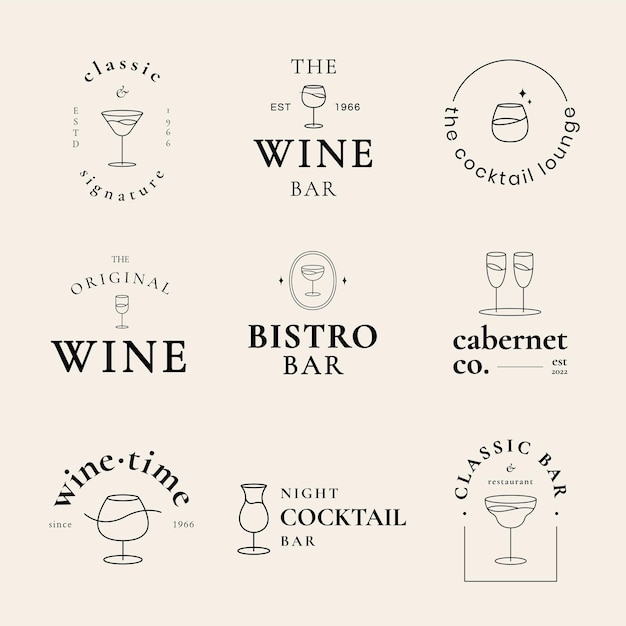
However, since we are talking about your own personal brand and no one else than you know better what determines and defines your brand identity, making your personal logo yourself might be the right way to go, especially if you have the means, the tools, and the determination to learn by doing.
This article will focus more on this third option and help you create a personal logo you can be proud of.
What makes a good personal logo?
Any logo needs to be a great representative of what it stands for, be it for your company, a client, or your personal brand.
When you design a logo for a client, it can be challenging to clearly define what they stand for, what they envision for their logo, and understand how they want to be represented with their logo.
As a graphic designer, when creating a logo for a client, you might need to schedule several meetings or even “interview” the client before you start working on some samples. And there will be lots of back and forth, as usual.
But what happens when your task is to create your own logo? It might seem easier since you know yourself best and see what you want to make for your personal brand.
Nevertheless, even though it might seem easier at first, once you start creating and doing some internal thinking, you might realize that it is not as easy as you think.
There are so many aspects of the logo that you need to consider. Later on, we will get back to that with a complete list of things to consider and tips to follow.
But first, let’s take a look at all 7 types of logos.
Types of logos
1. Emblems
When a logo includes text, a symbol, or a visual inside a geometric shape, it's called an emblem logo.
This type of logo will work for you if you want your logo to be memorable and have a more official and traditional look.
However, you might face some scalability issues if you go with this option.
2. Pictorial marks
Any logo that contains only a symbol is called a Pictorial mark or a Brandmark.
This type of logo is fun to work with. It is also scalable if the symbol you choose is not overcomplicated. However, if you do not have strong brand recognition already, we would not recommend this option.
If you simply want to create a personal logo that best represents you and your work, but you do not mind the disadvantages (i.e., being recognized with your logo is not super important to you), we have nothing against your decision.
3. Wordmarks
As the name suggests, wordmark logos are made up entirely of a brand’s name. For instance, you can create a wordmark logo using your first name, full name, last name, or an abstract name of your choice.
The idea is to pick a name and make o logo out of it. This type of logo is perfect for personal logos, mainly if you create a personal logo for the first time.
Wordmarks are simple, easy to mix with other design elements, and easily recognizable.
Since the entire logo will be made up of one or two words, you will need to pay close attention to the type of font you pick and the colors you choose.
4. Monogram logos
What if you want to use an acronym only? There is a name for that: Monogram logos (also called letter marks).
Monogram logos are perfect in terms of scalability, simplicity, and recognizability. They also look professional.
Similar to pictorial marks, letter marks are not the best choice if your brand is new to the market. Other than that, you will also have to pay attention to typography and the colors that you pick.
5. Abstract logo marks
Abstract logos are some of our favorites. They are a breath of fresh air and can help you stand out instantly.
Abstract logo marks usually contain abstract geometric forms and abstract elements.
Keep in mind that this type of logo will be a bit hard to recognize at the beginning for anyone who comes across your logo.
6. Mascot logos
Let’s admit it. Mascot logos are fun, and they transmit a friendly vibe. But do you want to be represented by a mascot for your personal logo? That is the question!
It all depends on you and what you want to include in your logo. Nevertheless, we would like to emphasize that mascot logos are hard to change over time. If you aim to send a professional message through your logo, stay far away from mascot logos.
7. Combination mark
If there is one logo that can be considered the safest choice, it is this: Combination Mark.
Do you already have a symbol that you would like to use for your logo but also like the brand's name to be included and can’t decide? Why not use both of them at the same time?
The name alone might not be enough, while the symbol alone might be too hard to recognize.
A combination logo allows you to mix and match different logo designs. It gives you the freedom to be as creative as you wish, and it is also easy to edit in the long term.
Once your personal brand gets more recognition, you can drop the name and keep only the chosen symbol.
To find more detailed info for each logotype, check out our blog on types of logos.
How to make a personal logo?
Do you want to tell a story through your personal logo? Do you want to make viewers curious and be as enigmatic as possible? What type of logo should you go for? Which colors? Symbol or no symbol?
All these questions can be a daunting task to answer all at once. So it is crucial to schedule some time to think these through and make some mental notes on what you would like to proceed with.
Now it is time to go through the design process one step at a time.
Step 1: Pick the logotype
After reading and researching more about each logotype and looking through some examples of existing logos for each logotype, it is time to call the shots.
If in doubt between two or more logotypes, pick a combination mark. It will give you much more freedom when it comes to making changes later.
Step 2: Your name or a business name?
Having your own name as part of the logo might seem too much for some, but they are not uncommon. Since we are talking about making your own personal logo, it makes sense that you might need to consider adding your first name, last name, or full name to your logo.
A personal logo is an extension of your own brand, so it makes sense to have your name as your logo. Here are a few great examples of personal logos that contain the artist's full name.
Instead of making a logo out of your full name, you might go for a business name or an abstract name that you feel best represents you. It is your call.
However, if you are a freelancer, you might want to use your personal name.
Step 3: Create a mood board
It doesn’t matter if you are working on a huge fashion magazine or brainstorming for your own personal logo. After you have decided on the logotype and whether to include your personal name or not, a mood board is a place to start your creative process.
You can do this the traditional way, using a physical board and attaching cut-out papers, photos, and other details that need to be part of your mood board.
Or you can go the digital way, a.k.a. Pinterest. It is easy to pin things you like and create boards with your favorite Pinterest posts for your design inspiration.
A digital mood board is beneficial if you will hire someone else to design your personal logo and need to share your thoughts and what inspired you with them.
The mood board will also help you determine how you want viewers to feel when they see your logo. It is the first step toward picking the right colors, lettering, and shapes for you.
So before you continue with the following steps, be sure to start creating and filling in your mood board.
Step 4: Time to pick the color scheme
Let’s go back to how you want the viewers to feel when they see your logo. The visuals, the images, design elements, symbols, and so on will each play a role in how your logo is seen and perceived.
However, color plays a key role here. You need to consider color physiology even before listing your values or selecting the right typography. The color or colors you choose and how you combine them will determine the emotions you will convey through your logo.
We suggest reading up on color psychology before making any important decision regarding the colors you want to pick.
Alternatively, you can create your own color palette with the help of Vectornator. It will be easy and fun to play with transparency and different color combinations.
Get creative with our ready-to-use templates.
Linearity Curve offers templates for every social media platform and various use case templates for posters, business cards, slides, app store screenshots, and more.
Step 5: Ask yourself these critical questions
- What do you want to convey through your logo?
- What is your personality?
- What are your short-term and long-term goals?
- Who is your target audience?
- Which colors best represent you and your character?
- What are your strengths?
- What values do you want to convey? Professional? Playful?
All of these questions and more will help you create a suitable logo for you, which will stand the test of time if you consider all different aspects and create a logo that best represents you and your values and how you want to be perceived.
Step 6: The importance of typography
We cannot stress enough how important selecting the right typography for your logo is.
If you go with a text logo, everything you will want to convey through your logo will be transmitted through each letter that is part of that logo. Color plays a significant role in text logos, but the main focus is lettering.
Are you deciding between a serif or sans-serif font? Choosing between all caps or small letters? We know the struggle... It will take a while to fine-tune all these details, but it is worth it if you plan to create an iconic personal logo.
While we understand that every personal logo will be different and represent your own unique style and personality, we suggest staying away from fancy fonts or any fonts that make it difficult to differentiate one letter from another.
You can pick two or three of your favorite fonts and experiment with them while experimenting with different logotypes.
Make your own personal logo with Linearity Curve (formerly Vectornator)
Linearity Curve (formerly Vectornator) is a powerful tool for digital typography, hand-lettering, and calligraphy.
So go ahead and explore lettering and play around with colors with the help of Linearity Curve (formerly Vectornator).
We have also prepared a comprehensive guide on why you should stick with a vector logo design, so be sure to read it through and find out how a vector logo can solve your scalability issues.
Jumpstart
your ideas with
Linearity Curve
Take your designs to the next level.
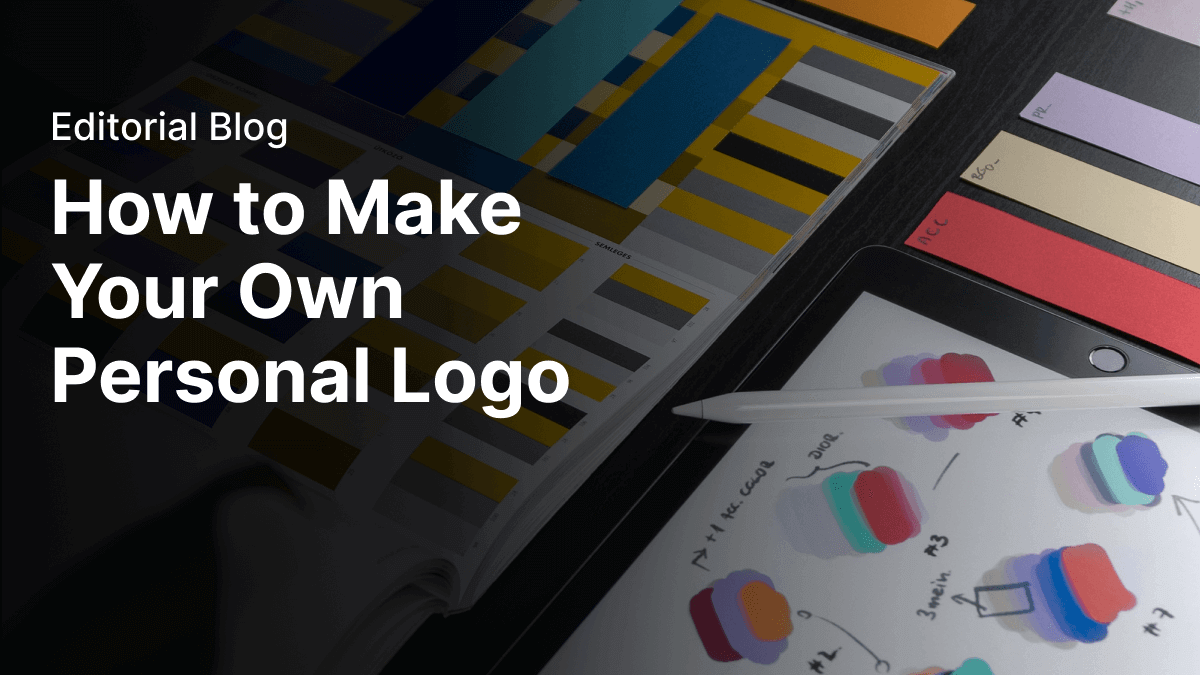
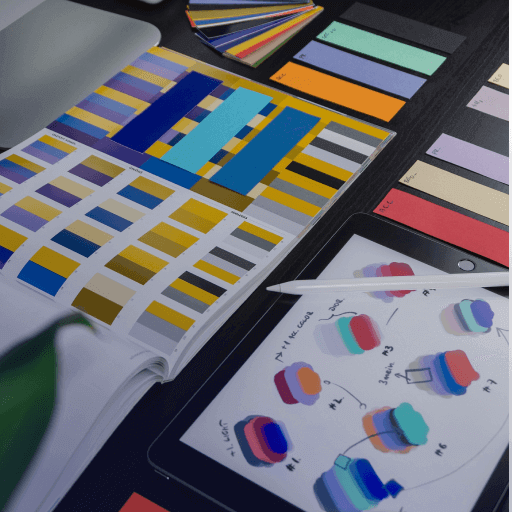
Share this!
Juxhina Malaj
Juxhina is a contributing writer to the Linearity Blog.


:quality(75))
:quality(75))



:quality(75))
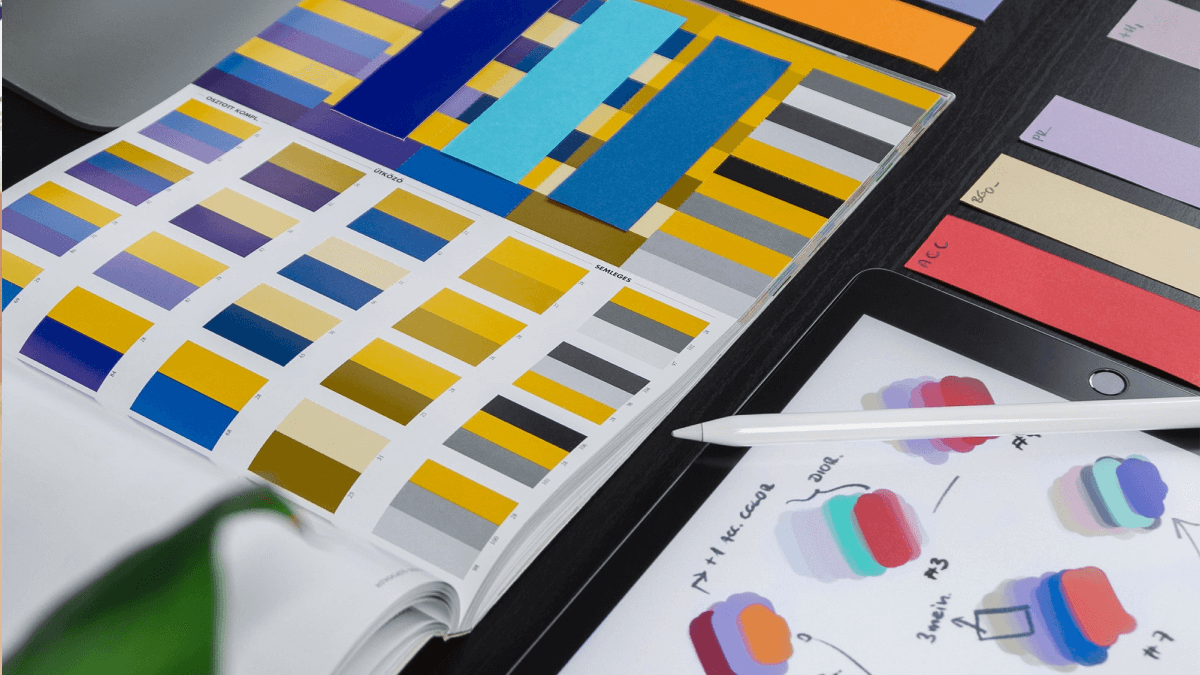
:quality(75))


